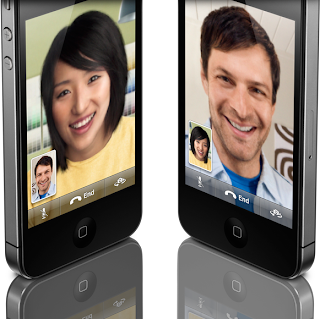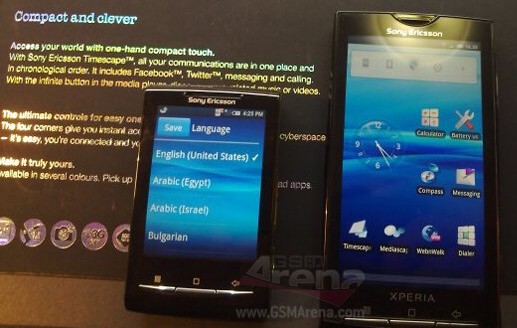In Lieu of the Behold II’s botched release, It was no surprise that when Samsung announced its new line of ‘Galaxy S’ Android super-phones, the public was skeptical. Questions about the upgrade-ability and Samsung support for their devices still loomed in the air, and there was the ugly fact that a new version of ‘Touch-wiz’ was going to be appearing again. Negative speculations began to develop and fester on the bloggosphere, that is until the hands-on reports started trickling in.
Overnight, the tech-world’s previous impression of the mobile giant (Samsung Electronics LTD) had been spit-shined clean, thanks to a Dazzling SUPER-AMOLED display technology, and hardware specs that trumped all other current gen android phones. More importantly, Samsung trimmed down the Touch-wiz interface, allowing the android operating system to actually shine though. The icing on the cake however, was that the Galaxy-S would be released on all four major US carriers under different monikers.
I had returned my recently purchased MyTouch Slide, and was waiting for a more powerful Android device when I heard the news that T-mobile would be the 1st to release its Galaxy-S phone under the name ‘Vibrant.’ I had decided in my mind to give it a shot.
On the day of release, I was one of the 1st to pick my android phone from the local T-Mobile Store. I went immediately home to give the phone a proper breaking-in.
My 1st Impressions of the new interface can be summed up in one word. Iphone. The Touch-wiz 3.0 interface swappes the traditional android ‘app drawer’ and replaces it with 3 sliding app screens mimicking Apple’s operating system. Definitely an improvement over previous versions of touch-wiz, but as a die-hard android fan, I found this to be offensive. I can, however understand the need to market an android device that helps ex-Iphoners feel more ‘at home.’ Luckily because Android’s OS is open, I was able to easily to overhaul the user interface with a more traditional one that I found on the Android Market called Launcher Pro.
I began to fill up my phones memory with apps from my old G1 and found the internal app-storage memory large enough to accommodate all the apps I could ever want or need. I quickly replaced the SD card with the one in my G1 and was amazed at how snappy everything loaded up. All the pictures and movies are started at the touch, and there is very little lag when accessing the sd card (a shortcoming of my old geriatric G1). As an added bonus here, there are 16 (cout’em sixteen) gigs of internal memory built into the device so if you don’t have a large sd card, and its mostly music and pics you’ll be saving, the on-board memory should be fine.
What really knocked my socks off was when I took the phone on its 1st outings. The flashless camera’s night vision proved pub-worthy when out with by buddies, and video recorder was able to capture candid clips of my cousin’s bright and shiny wedding day in glorious 1280x720 HD. Adding to the multimedia features, is the option to use video-out to a TV with a 3 dollar cable that can be found on amazon.com. I am so happy to be able to replace two other gadgets with one. That’s less things stuffed into my pockets, and that is a good thing when cargo pants are a thing of the past.
Speaking of space, you’ll see that the 4-inch screen gives plenty of real-estate for web browsing or watching videos, and yet is one of the slimmest devices I’ve used to date. It’s light, but doesn’t feel cheap to me. It’s a well-designed phone from a utilitarian point of view.
Perhaps the one and only thorn in the heel of this ambitious phone is the GPS quality. Since day one, I’ve noticed a weaker than usual GPS lock, and the service at times isn't as reliable as it should be for a GPS enabled device. After trying countless versions of ‘online fixes’ without lasting success, I was happy to stumble upon this tweet a Samsung representative left via the company’s twitter page:
‘We’re testing software to optimize GPS on US Galaxy S. Expected updates avail. in Sept. Details & download to follow.’ (Thanks to the community @ Tmonews.com for the find.)
A T-mobile rep I spoke with also confirmed that a software fix for the issue will be rolled out soon, and I am sitting here crossing my fingers that it will do the trick. It is good to see that Samsung has seemingly learned from the Behold II, that lasting customer relationships do matter over the long-run.
The GPS problem isn’t so bad that it can’t be used at all, in fact on major roads and highways it works OK, it’s the smaller streets that suffer, and for the most part, I hardly use the GPS at all. But the problem I see isn’t just the GPS. It’s about a Tech company’s ability to deal with a quality and service issue in a timely manner. For people who depend on GPS service, those who bought the phone under the assumption that they were buying a product that would provide them a specific service, this is no small issue. Between Samsung and T-mobile, a fix better come soon, and it better be thorough.
It’s really too bad the launch of the Vibrant has been shadowed by this GPS issue, because the longer it takes them to come up with a fix, the sooner the spotlight will shift to the next hot piece of tech. With all its other great features, the Samsung Galaxy-S stands to be an impressive piece of technology. If Samsung can manage deal with this problem quickly, they may not only have a winner on their hands, but some time left to brag about it as well.





